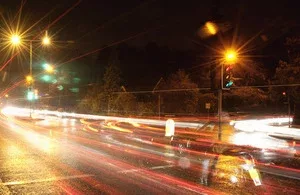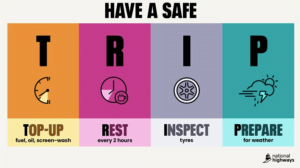National Highways is l switching 70% of the lights on the Strategic Road Network (SRN) to cleaner LED alternatives by 2027.
The government-owned company is working on its biggest-ever programme replacing older lamps with LED lights that use far less energy to produce the same amount of light, starting last month (January) on the A5036 in the North West.
There are around 105,000 lights across the SRN, 26% of which are already LED. By March 2027, National Highways will have invested £132m over a five-year period to retrofit most of the remaining lights – taking the amount of environmentally friendly LED lights across the network to at least 70%.
Typically, this could mean using up to 65% less energy depending on the wattage of the existing lamps replaced; this matters because lighting accounted for 64% of National Highways’ corporate energy consumption in the 2021/22 financial year.
The new LEDs also last longer meaning fewer road closures and improved safety for roadworkers as they require less maintenance.
Road lighting makes up around half of National Highways’ corporate carbon emissions, which includes network lighting, roadside equipment, travel and our offices.
With a pledge to hit net zero corporate emissions by 2030, it is important that the company introduces more energy-efficient lighting technologies, said National Highways.
And while LED switchover has happened on an ad hoc basis over the years, this marks the start of a dedicated multi-million-pound investment specifically aimed at upgrading 70% of streetlights to LED by 2027 as per the target in the Net Zero plan.
Steve Elderkin, Director of Environmental Sustainability for National Highways, said: “We are delighted to be modernising the lighting across our network by investing over £100m into clearer more efficient technology.
“These new LED lights will not only reduce our emissions and ensure that journeys are safer, but also reduce the amount of maintenance needed across the network.
“As a company, we manage 4,500 miles of road so it is vital we look to cleaner alternatives.
“Our net zero plan has laid out how we want to hit net zero for our own emissions by 2030 we will continue to invest as technology becomes available, meeting the government’s Road to Zero strategy.”
Decarbonisation Minister Jesse Norman said: “The Government has an ambitious and credible plan to deliver its net zero targets.
“Today’s announcement shows the progress being made to decarbonise all aspects of the UK’s roads, improving journeys for drivers while reducing the need for lighting repairs and road closures”.
Martin Hobbs, National Programmes Director for the LED Upgrade programme being delivered by National Highways, added: “At National Highways, our work goes beyond the traditional focus of road investment and beyond operating, maintaining and improving roads.
“Our Designated Funds programme has supported projects across the country over a number of years and we continue to look at future opportunities to enhance the environment around our network.
“To ensure any disruption is kept to a minimum, the work required to upgrade the lights is where possible being done alongside existing maintenance work to reduce the impact of this of our activities on the travelling public, local communities and businesses.”
LED stands for light-emitting diode. The LED light source is highly efficient and environmentally friendly. It is more controllable than previous types of street lighting as it can be dimmed when necessary and it concentrates light on where it’s needed with less light pollution.
Other benefits of LED lighting include:
- Less energy required and cheaper to run
- lower failure rate means fewer road closures and improved safety for roadworkers as less maintenance required
- minimise obtrusive light by reducing:
- light falling where it is not intended or needed
- excessive brightness, or glare that causes visual discomfort
- the unnecessary brightening of the night sky
The LED Upgrade Programme forms a key part of National Highways’ ambition to reduce corporate emissions to net zero by 2030 as set out in our Net zero highways plan.
The company is cutting direct carbon emissions from road lighting, roadside equipment, travel, and offices in the following ways:
- Aim to generate 10% of its electricity from renewable sources on, or near to, our own sites by 2030
- Switch 70% of its road lighting lights to LED by 2027
- Plant at least 3 million trees on or near its land by 2030
- 75% reduction in corporate emissions by 2025, compared to the 2017/2018 baseline
- 75% of its cars and vans electric or hybrid by 2025
In 2020, National Highways achieved its commitment to only buy 100% certified renewable electricity. Its focus is now generating more of its own energy, decarbonising travel and increasing the removal of carbon on its own sites.
You can earn more about National Highways’ net zero plan here.





















